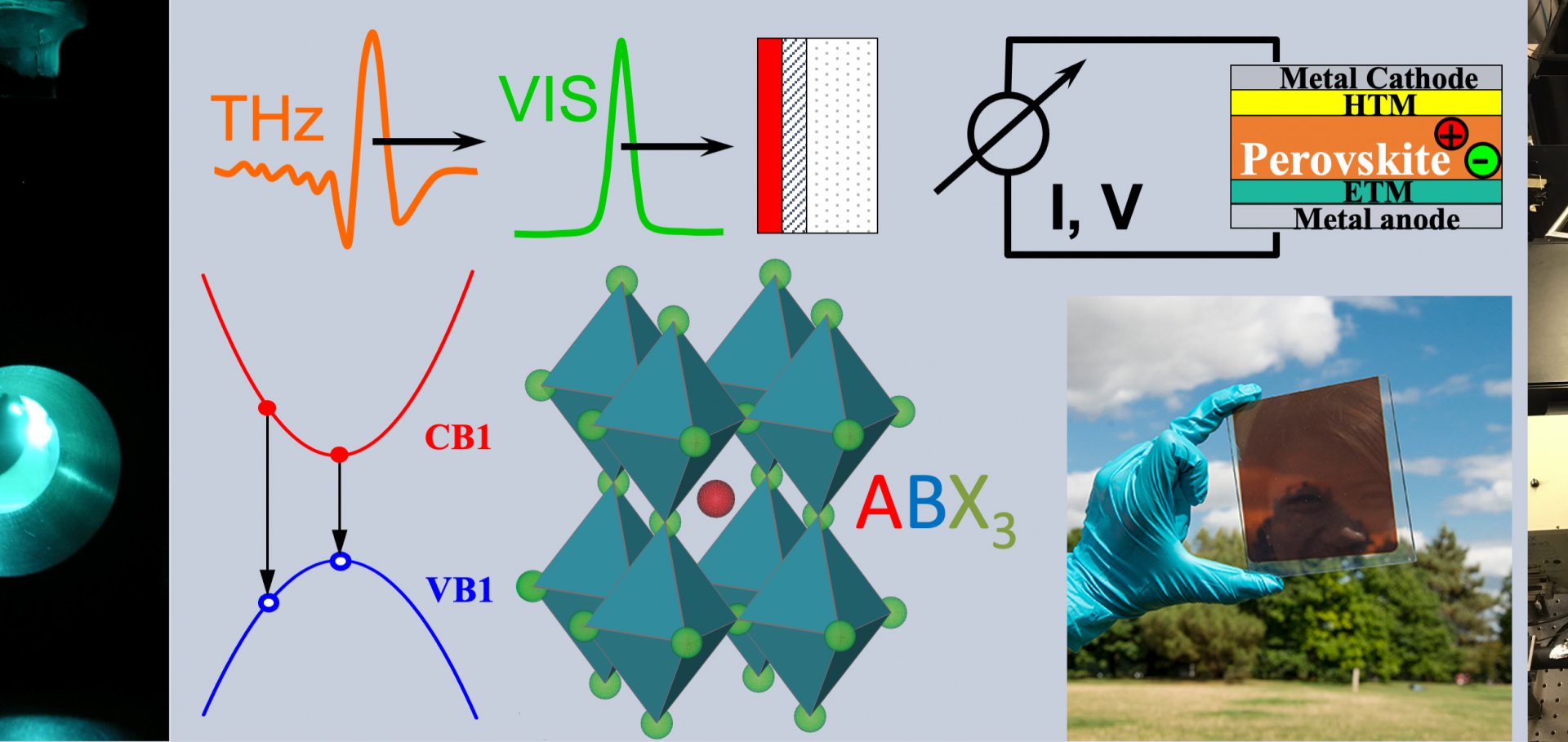Terahertz Conductivity Analysis for Highly Doped Thin-Film Semiconductors
JOURNAL OF INFRARED MILLIMETER AND TERAHERTZ WAVES 43:9-10 (2022) 845-845
Understanding and suppressing non-radiative losses in methylammonium-free wide-bandgap perovskite solar cells
Energy and Environmental Science Royal Society of Chemistry 15 (2021) 714-726
Abstract:
With power conversion efficiencies of perovskite-on-silicon and all-perovskite tandem solar cells increasing at rapid pace, wide bandgap (> 1.7 eV) metal-halide perovskites (MHPs) are becoming a major focus of academic and industrial photovoltaic research. Compared to their lower bandgap (< 1.6 eV) counterparts, these types of perovskites suffer from higher levels of non-radiative losses in both the bulk material and in device configurations, constraining their efficiencies far below their thermodynamic potential. In this work, we investigate the energy losses in methylammonium (MA) free high-Br-content widegap perovskites by using a combination of THz spectroscopy, steady-state and time-resolved photoluminescence, coupled with drift-diffusion simulations. The investigation of this system allows us to study charge-carrier recombination in these materials and devices in the absence of halide segregation due to the photostabilty of formamidinium-cesium based lead halide perovskites. We find that these perovskites are characterised by large non-radiative recombination losses in the bulk material and that the interfaces with transport layers in solar cell devices strongly limit their open-circuit voltage. In particular, we discover that the interface with the hole transport layer performs particularly poorly, in contrast to 1.6 eV bandgap MHPs which are generally limited by the interface with the electron-transport layer. To overcome these losses, we incorporate and investigate the recombination mechanisms present with perovskites treated with the ionic additive 1-butyl-1-methylpipiderinium tetrafluoroborate. We find that this additive not only improves the radiative efficiency of the bulk perovskite, but also reduces the non-radiative recombination at both the hole and electron transport layer interfaces of full photovoltaic devices. In addition to unravelling the beneficial effect of this specific treatment, we further optimise our solar cells by introducing an additional LiF interface treatment at the electron transport layer interface. Together these treatments enable MA-free 1.79 eV bandgap perovskite solar cells with open-circuit voltages of 1.22 V and power conversion efficiencies approaching 17 %, which is among the highest reported for this material system.Phase segregation in mixed-halide perovskites affects charge-carrier dynamics while preserving mobility
Nature Communications Springer Nature 12 (2021) 6955
Abstract:
Mixed halide perovskites can provide optimal bandgaps for tandem solar cells which are key to improved cost-efficiencies, but can still suffer from detrimental illumination-induced phase segregation. Here we employ optical-pump terahertz-probe spectroscopy to investigate the impact of halide segregation on the charge-carrier dynamics and transport properties of mixed halide perovskite films. We reveal that, surprisingly, halide segregation results in negligible impact to the THz charge-carrier mobilities, and that charge carriers within the I-rich phase are not strongly localised. We further demonstrate enhanced lattice anharmonicity in the segregated I-rich domains, which is likely to support ionic migration. These phonon anharmonicity effects also serve as evidence of a remarkably fast, picosecond charge funnelling into the narrow-bandgap I-rich domains. Our analysis demonstrates how minimal structural transformations during phase segregation have a dramatic effect on the charge-carrier dynamics as a result of charge funnelling. We suggest that because such enhanced recombination is radiative, performance losses may be mitigated by deployment of careful light management strategies in solar cells.Chemical control of the dimensionality of the octahedral network of solar absorbers from the CuI-AgI-BiI3 phase space by synthesis of 3D CuAgBiI5
Inorganic Chemistry American Chemical Society 60:23 (2021) 18154-18167
Abstract:
A newly reported compound, CuAgBiI5, is synthesized as powder, crystals, and thin films. The structure consists of a 3D octahedral Ag+/Bi3+ network as in spinel, but occupancy of the tetrahedral interstitials by Cu+ differs from those in spinel. The 3D octahedral network of CuAgBiI5 allows us to identify a relationship between octahedral site occupancy (composition) and octahedral motif (structure) across the whole CuI–AgI–BiI3 phase field, giving the ability to chemically control structural dimensionality. To investigate composition–structure–property relationships, we compare the basic optoelectronic properties of CuAgBiI5 with those of Cu2AgBiI6 (which has a 2D octahedral network) and reveal a surprisingly low sensitivity to the dimensionality of the octahedral network. The absorption onset of CuAgBiI5 (2.02 eV) barely changes compared with that of Cu2AgBiI6 (2.06 eV) indicating no obvious signs of an increase in charge confinement. Such behavior contrasts with that for lead halide perovskites which show clear confinement effects upon lowering dimensionality of the octahedral network from 3D to 2D. Changes in photoluminescence spectra and lifetimes between the two compounds mostly derive from the difference in extrinsic defect densities rather than intrinsic effects. While both materials show good stability, bulk CuAgBiI5 powder samples are found to be more sensitive to degradation under solar irradiation compared to Cu2AgBiI6.Interplay of structure, charge-carrier localization and dynamics in copper-silver-bismuth-halide semiconductors
Advanced Functional Materials Wiley 32:6 (2021) 2108392


